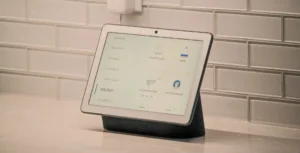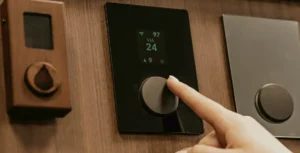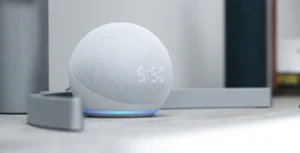If you’ve ever tried setting up a smart home, you’ve probably come across different terms like Zigbee, Thread, and Matter. And let’s be honest – for beginners, it can feel like alphabet soup. Don’t worry, you’re not alone! The truth is, this is just smart home protocol – the “language” that smart devices use to talk to each other. Choosing the right one is important if you want your smart gadgets to work smoothly together without headaches.
In this article, we’ll break down what Zigbee is, what Thread with Matter means, and most importantly, help you figure out which one is the best choice for your smart home in 2025 and beyond.
If you’re just starting your journey into automation, check out How to Automate Your Home in One Weekend.
What is Zigbee?
Zigbee has been around for more than a decade, and it’s one of the most popular smart home protocols today. Think of it as the “classic” smart home language that many devices – like Philips Hue lights, Samsung SmartThings sensors, and IKEA smart bulbs – already speak.
- How it works: Zigbee creates a mesh network, meaning every device (like a smart bulb or plug) can relay the signal to another device, extending the range.
- Hub required: Most Zigbee systems need a hub or gateway (like Philips Hue Bridge or an Echo with Zigbee built-in).
- Why people like it: It’s stable, proven, and works with thousands of affordable devices.
Many energy-efficient appliances already rely on Zigbee – just like those in our guide Top 10 Energy-Efficient Appliances for 2025.
✅ Pros of Zigbee
- Large ecosystem of devices (lights, sensors, plugs, locks, etc.)
- Mature and reliable technology
- Works well in a mesh network (great coverage)
- Energy-efficient (perfect for battery-powered devices)
❌ Cons of Zigbee
- Requires a hub (extra cost & complexity)
- Compatibility depends on the brand ecosystem
- It can sometimes be tricky to set up for beginners
You’ll also find Zigbee support in some of the Best Robot Vacuum Brands in 2025.
What is Thread (and why Matter makes it different)?
Thread is a newer technology, designed to solve many of Zigbee’s limitations. At its core, Thread is also a mesh network, but it’s IP-based – which means devices connect directly to the internet and to each other, just like your phone or laptop.
Now, here’s the exciting part: Matter. Matter is not a protocol by itself – it’s more like a universal standard that runs on top of Thread (and also Wi-Fi for certain devices). Think of Matter as the “translator” that ensures devices from different brands actually understand each other.
For example:
- A Matter over Thread smart bulb from Nanoleaf can work directly with Apple Home, Google Home, Alexa, or SmartThings – without you needing brand-specific apps or hubs.
- Smart thermostats with Matter integration can help reduce your bills – see How Smart Thermostat Can Save You Money All Year.
✅ Pros of Matter over Thread
- Interoperability: Works across brands (finally, no more “does it work with Alexa?” worries).
- No need for dedicated hubs – just a Thread border router (many smart speakers like Nest Hub, Echo, or Apple TV already act as one).
- Secure, fast, and reliable connections.
- Future-proof – it’s where the entire smart home industry is headed.
❌ Cons of Matter over Thread
- Still new, so the ecosystem of devices is smaller compared to Zigbee.
- Some features are still being rolled out and may feel limited in early devices.
You may need a newer smart speaker or hub to act as a Thread border router.
Matter over Thread vs Zigbee: Key Differences
| Feature | Zigbee | Matter over Thread |
| Age & Maturity | 10+ years, well-established | New (2022+), still growing |
| Ecosystem | Thousands of devices available | Fewer devices, but rapidly expanding |
| Hub Requirement | Needs a Zigbee hub (like Hue Bridge) | No dedicated hub, only a Thread border router (many smart speakers already have one) |
| Compatibility | Works best within the same ecosystem | Works across brands (universal) |
Future-proofing | Slowly fading, but still relevant | Designed as the future standard |
| Setup | Can be tricky for beginners | Easier, especially with Matter certification |
Which One Should You Choose for Your Smart Home?
Here’s the honest truth:
- If you’re just starting your smart home in 2025, go for Matter over Thread. It’s the future, it works with multiple ecosystems, and it’ll save you headaches later.
- If you already own a bunch of Zigbee devices, don’t throw them away! Zigbee is still solid and supported by many hubs. But when adding new devices, try to buy Matter-compatible ones to future-proof your setup.
Best strategy? A hybrid approach. Many households will run a mix of Zigbee (legacy devices) and Matter over Thread (new purchases). Over time, Matter will dominate – but Zigbee won’t disappear overnight.
Smart home protocols examples
- You buy a Zigbee bulb today – it needs a Hue Bridge or Zigbee hub.
- You buy a Thread bulb tomorrow – your Google Nest Hub or Apple TV can act as the border router, and the bulb will work with Alexa, Google, or Apple without extra hubs.
Which feels easier? Exactly. That’s why Matter over Thread is winning.
Final Thoughts
Choosing between Zigbee and Matter over Thread is really about future-proofing your smart home.
- Zigbee: Reliable, tested, huge device library.
- Matter over Thread: The universal, simple, future standard with cross-brand compatibility.
If you’re building from scratch in 2025 → choose Matter over Thread.
If you already have Zigbee devices → keep them, but buy Matter-compatible products moving forward.
The bottom line? Matter over Thread is the language of the future smart home. And the sooner you switch, the smoother your journey will be.






